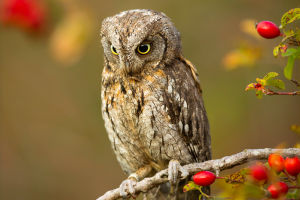Animal Navigation Secrets
Have you ever wondered how animals, from tiny insects to majestic birds, can travel thousands of miles without maps, GPS, or even any visible markers?
It's truly remarkable! Whether it's the annual migration of monarch butterflies or the incredible journeys of humpback whales, animals have an extraordinary ability to navigate vast distances, often across unfamiliar landscapes.
In this article, we will delve into the science of animal migration and the natural cues that help guide these creatures on their incredible journeys.
How Do Animals Find Their Way?
Unlike humans, animals don't rely on modern technology to navigate. Instead, they use a variety of natural cues, many of which are still being studied by scientists. Some of the most common navigation tools in the animal kingdom include the sun, stars, magnetic fields, and even the Earth's natural odors.
For example, many species of birds use the position of the sun during the day and the stars at night to orient themselves. In the case of migratory birds, they can even use the Earth's magnetic field to guide their flight path. This innate ability to sense the magnetic field is called "magnetoreception," and it's thought to be linked to specialized cells in their brains that allow them to detect the Earth's magnetic poles.
The Role of the Sun and Stars
One of the oldest methods of navigation used by animals is the position of the sun. Animals like bees, birds, and even sea turtles rely on the sun's position in the sky to determine the time of day and, consequently, the direction in which they should travel. By observing the angle of the sun, they can determine their heading and stay on course during long journeys.
At night, some animals, such as migratory birds, use the stars to navigate. This ability is particularly impressive when you consider that the stars move in the sky depending on where you are on the Earth. Yet, many animals have evolved the ability to use the stars as reliable markers to guide them across great distances, even when they are far from home.
Magnetic Fields and Earth's Natural Cues
Another fascinating navigational tool that animals use is the Earth's magnetic field. Birds, sea turtles, and even some fish can sense magnetic fields, allowing them to navigate over long distances. This ability to "feel" the Earth's magnetic field is believed to be connected to a specific protein in the animals' eyes, which reacts to changes in the magnetic field.
Research has shown that some animals can even detect the intensity and direction of the Earth's magnetic field, allowing them to follow precise migratory routes across the globe. For example, sea turtles are known to migrate thousands of miles across the ocean to reach their birthplace. They are able to navigate using the Earth's magnetic field, which acts like a map that leads them directly to the same beach where they were born.
The Use of Smell and Environmental Cues
Apart from the sun, stars, and magnetic fields, animals also use their sense of smell to navigate. This is particularly true for animals that live in specific habitats, such as wolves or elephants, that rely on familiar scents to find their way. Wolves use the scent of their pack members to stay together, while elephants have been shown to use the scent of water or familiar trails to guide their migrations.
Moreover, many animals can also detect subtle environmental changes, such as temperature shifts or air pressure variations. These changes act as natural signals, helping animals to determine when it's time to migrate or change direction.
The Mystery of Animal Navigation: What We Still Don't Know
Despite the incredible progress in understanding animal navigation, there's still a lot we don't know. How do animals integrate all of these cues to make precise decisions about where to go? How do they learn these skills, especially when the journey spans generations, as seen in migratory species? These are questions that researchers continue to explore.
Some scientists are studying the role of genes in navigation, asking whether animals are born with the ability to navigate, or if they learn it through experience. Others are looking into the potential influence of the Earth's atmosphere and weather patterns on navigation. It's a fascinating field of study that continues to reveal new insights into the lives of these remarkable creatures.
Why Is Understanding Animal Navigation Important?
Understanding how animals navigate is not just an academic pursuit—it has real-world implications. For instance, understanding the migratory patterns of species can help in conservation efforts, especially as climate change and human activities disrupt natural habitats. By learning more about how animals use the environment to guide their travels, we can work to preserve those cues and protect the species that depend on them.
Moreover, animal navigation could inspire new technologies. Scientists are already working on creating GPS systems that mimic the navigation abilities of animals, which could one day lead to more efficient and environmentally friendly technologies.
Conclusion: The Wonders of Nature's GPS
As we continue to explore the science of animal migration, one thing becomes clear: animals are incredibly adept at navigating their world. They rely on a wide range of natural tools, from the sun and stars to magnetic fields and scents, all of which help them travel vast distances without maps or technology.
The more we learn about these remarkable creatures, the more we realize how much we have yet to understand about the mysteries of the natural world.
What do you think? How do you imagine the world of animal navigation could evolve as we continue to uncover more secrets of nature? Let us know your thoughts!
-
 Secrets of SilenceThis Tiny Owl Disguises Itself as a Tree—Its Silent World and Nighttime Secrets Will Leave You in Awe!
Secrets of SilenceThis Tiny Owl Disguises Itself as a Tree—Its Silent World and Nighttime Secrets Will Leave You in Awe! -
 Exotic Pets Gaining FansFrom sugar gliders to parrots: The exotic pet craze EXPLAINED! Would you dare to own one? ✨
Exotic Pets Gaining FansFrom sugar gliders to parrots: The exotic pet craze EXPLAINED! Would you dare to own one? ✨ -
 Paws & Ponder: Animal DreamsTurns out your napping pet may be dreaming like you—of love, fear, or food! Explore stunning truths of animal dreams you won’t believe
Paws & Ponder: Animal DreamsTurns out your napping pet may be dreaming like you—of love, fear, or food! Explore stunning truths of animal dreams you won’t believe
Copyright © zogu 2021 - 2025. All Right Reserved.